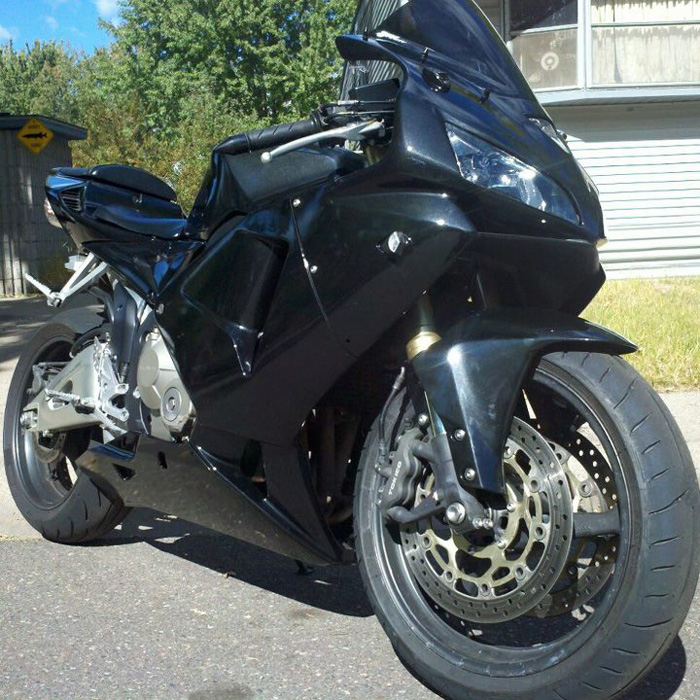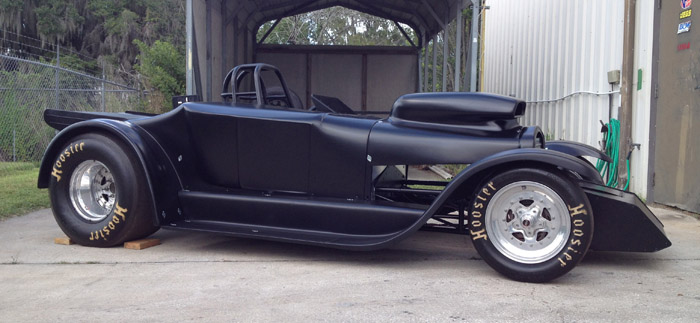Black Car Paint Colors - An Overview
 Black Car Paint is still one of the most popular colors for automotive use in global automotive markets. When you combine all the various types of black colors they represent a substantial portion of global automotive, motorcycle, and fleet finishes for both original equipment manufacturer (O.E.M) and aftermarket applications. My goal in this article is to discuss some of the various types of black colors available today for automotive applications.
Black Car Paint is still one of the most popular colors for automotive use in global automotive markets. When you combine all the various types of black colors they represent a substantial portion of global automotive, motorcycle, and fleet finishes for both original equipment manufacturer (O.E.M) and aftermarket applications. My goal in this article is to discuss some of the various types of black colors available today for automotive applications.
General Black Auto Paint
While some might consider black a universal color, black automotive paint can actually vary a great deal depending on how it is made and what is added to it to enhance color. Depending on how it was made the most common base pigment used to make black finishes, carbon black, is available in many forms including jet black, lamp black, channel black, and bone black to name a few. Jet blacks and lamp blacks are the most common forms used for automotive applications but there is still quite a bit of variation in those depending, again, on how the pigment was made, how it is milled into paint, and what is added with it to reveal a new hue. The most popular uses of black pigment to make shades of black automotive paint are jet blacks, black pearls, and black metallics.
Jet Blacks
Over the history of the automotive industry jet black car paint is the most popular color of all time. We've all heard the stories of how Henry Ford reported that "you could have any color you wanted as long as it was black" but the demand for black was prevalent even in the early days of the automotive business. The demand for jet black finishes is still strong despite draw backs of higher car exterior temperatures and the fact that soiling can be easily seen on deep jet black finishes.
Jet black finishes require special pigments that are highly milled and stabilized to achieve a finish that meets today's requirements for deep black or highly jet black. Choice of ancillary items such as thinners and activators as well as paint application plays a role in how "jet" a black finish will appear. Finishes that dry too quickly in a humid environment can cause "blushing" which will reduce the jet of the finish as well as application equipment that incorporates too much moisture during application (wet air lines). A properly formulated and applied jet black finish will give a vehicle a sporty and luxurious color that appeals to a wide audience which explains why it is so popular still today.
Black Pearls
Combination of either dispersed (milled) jet black or lamp black pigments with pearlescent powders gives a unique shimmer to black car paints  that can be very appealing. Small amounts of pearl added to the black creates a color that still largely looks black but at certain angles in the sun will give a colored shimmer depending on the color of the pearl used. Common pearls used in black pearl finishes include silver, gold, blue, and red but there are many to choose from each giving a unique look. Black pearls offer a black with a little pizzazz and often show dirt less than straight jet black finishes.
that can be very appealing. Small amounts of pearl added to the black creates a color that still largely looks black but at certain angles in the sun will give a colored shimmer depending on the color of the pearl used. Common pearls used in black pearl finishes include silver, gold, blue, and red but there are many to choose from each giving a unique look. Black pearls offer a black with a little pizzazz and often show dirt less than straight jet black finishes.
Black Metallics
Black Metallics are created similarly to black pearl finishes where finely ground aluminum flakes are added to give a silver shimmer to the black. The look of the black metallic can be varied by changing the type of black used (typically a jet black or lamp black), the amount of metallic flake used, and the type of metallic flake used. There are many types of metallic flakes ranging from coarser particles to finer particles and even varying shades of brightness. Black metallics are also sporty looking and tend to make dirt less obvious than straight jet black.
Low Gloss Blacks
Low Gloss Blacks like "Flat Black", "Hot Rod Black", and "Satin Blacks" have become quite popular even in the mainstream automotive market in recent years. In fact, several European sports car manufacturers and even Ford has announced they plan to have an offering of this type finish for some of their new car models. These types of finishes have been around for decades in the hot rod culture but have now branched out into a much larger following. Flat Blacks are the lowest gloss level available which some people like and others find to have a "chalky" look about them. The most popular form of low gloss blacks are the "Hot Rod Black" finishes which are not completely flat but have a very slight sheen to them for a sleek finish. "Satin Blacks" are also popular and feature a higher gloss than Flat Blacks and Hot Rod Blacks. The higher gloss Satin Black finishes tend to look darker and more jet than its lower gloss cousins but some just prefer the lower gloss look. Many find the unique look of low gloss blacks really appealing but there are drawbacks. Low gloss blacks should not be polished, buffed, waxed or even scrubbed really hard during cleaning or they tend to become more glossy in sports which makes for an unattractive finish. Oils, soaps, greases, and dried dirty water tend to show up on low gloss finishes surprisingly well and often can be more difficult to remove than on gloss finishes.
Other Black Finishes
There are countless shades of the above mentioned blacks available but there are also some notables that don't fit well into one of those categories. One such notable is Candy blacks. Candy blacks are typically made from black dyes to give a transparent film which allows for some unique colors depending on the base color used. Candy Paint finishes can be difficult to apply but when applied properly offer some really cool looking finishes. Another noteable black is thermochromic black finishes. Thermochromics are colors that change color with varying temperature. Thermochromic black typically changes to a milky white or transparent film. Thermochromic and candy blacks offer a really unique look but tend to fade quickly compared to other black finishes.

